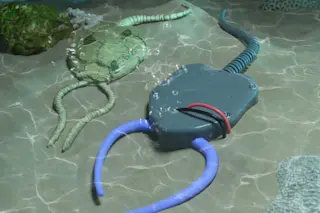The Mesmer anti-drone technology can take control of drones that may pose a threat in civilian airspace. Credit: Department 13 Shooting down unwanted drones near a crowded sports stadium or concert can be tricky business. Even a fairly small quadcopter could cause injury to people below if it falls out of the sky because a laser weapon has burned its electronics or a jammer has disrupted its flight controls. A startup has a safer anti-drone solution for the skies above the U.S. homeland: hack a potentially dangerous drone's radio communications and take control. The startup, called Department 13, first figured out how its anti-drone technique after receiving funding from the U.S. Defense Advanced Research Projects Agency (DARPA). Department 13 initially focused on investigating the communication protocols that many devices use to exchange wireless radio communication. Its engineers realized that they could change state and behavior of devices relying on radio ...
How Department 13's Anti-Drone Weapon Takes Control
Explore Mesmer anti-drone technology by Department 13, designed to control drones safely in civilian airspace.
More on Discover
Stay Curious
SubscribeTo The Magazine
Save up to 40% off the cover price when you subscribe to Discover magazine.
Subscribe













